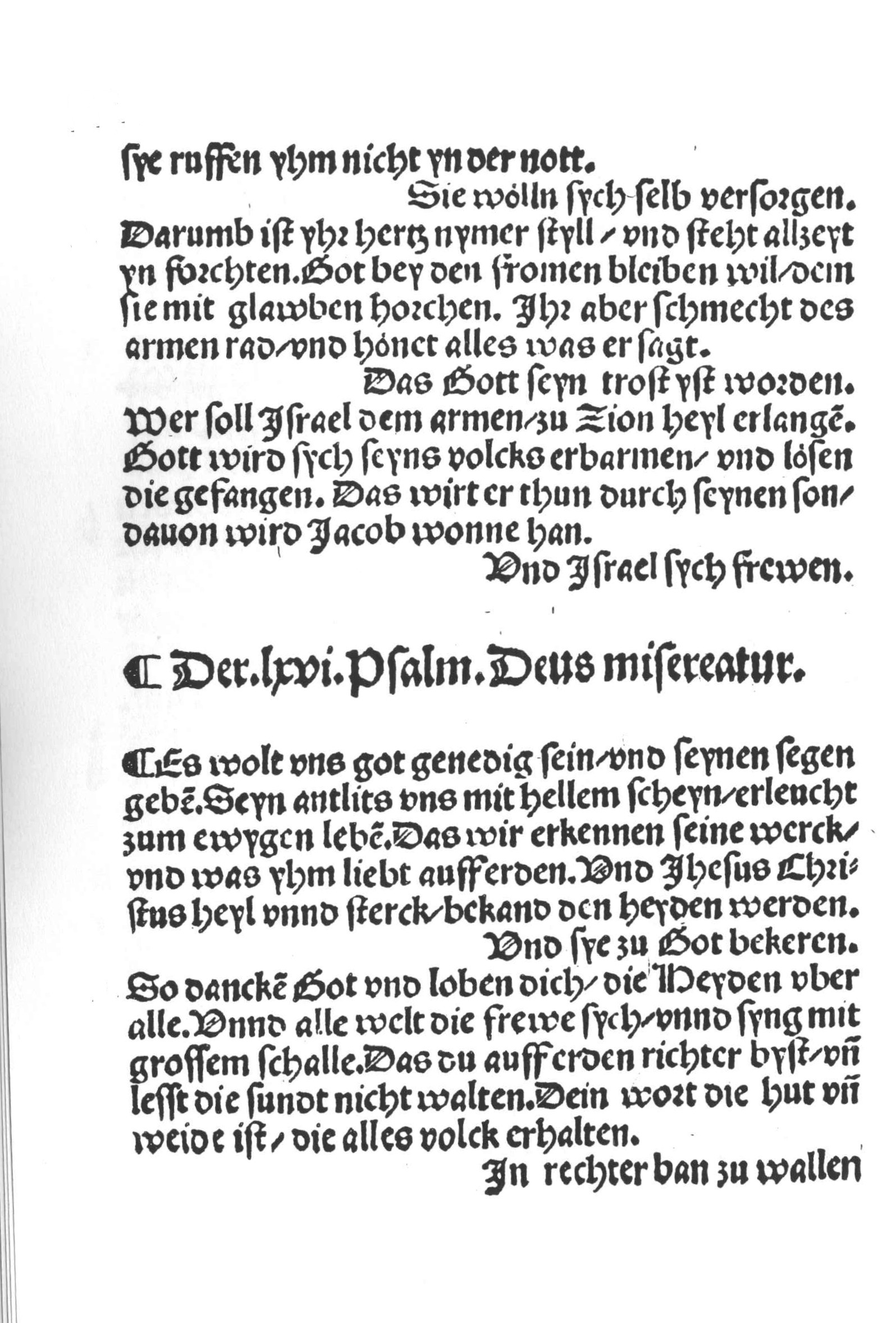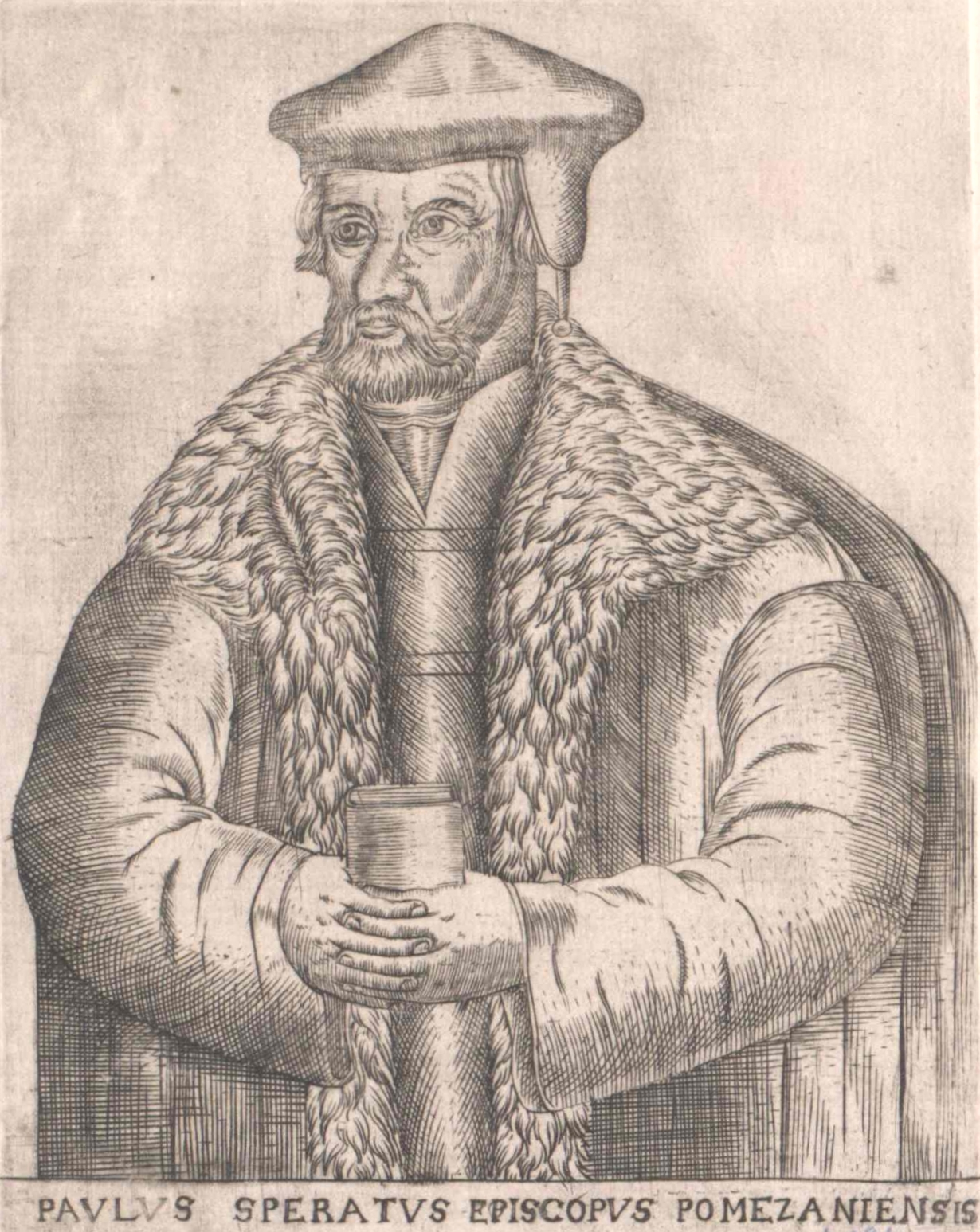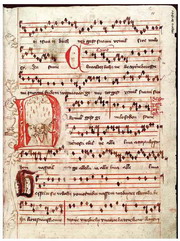|
Achtliederbuch
The First Lutheran hymnal, published in 1524 as ''Etlich Cristlich lider / Lobgesang und Psalm'' (Some Christian songs / canticle, and psalm), often also often referred to as the Achtliederbuch (Book with eight songs, literally Eightsongsbook), was the first Lutheran hymnal. History and content The hymnal was created by Martin Luther and Paul Speratus working in collaboration. It contains eight hymns: four by Luther, three by Speratus, and one anonymous, which has been attributed to Justus Jonas. The creators declared their intentions on the title page: "Lobgesang / un Psalm / dem rainen wort Gottes gemeß / auß der heylige schrifft / durch mancherley hochgelerter gemacht / in der Kirch zu singen / wie es dann zum tayl Berayt in Wittenberg in übung ist." (Canticle / and psalm / according to the pure word of God / from the holy scripture / made by several learned eople/ to be sung in church / as already practised in part in Wittenberg.) The hymnal is rather "eine lose buchhän ... [...More Info...] [...Related Items...] OR: [Wikipedia] [Google] [Baidu] |
Erfurt Enchiridion
The ''Erfurt Enchiridion'' (enchiridion, from grc, ἐγχειρίδιον, hand book) is the second Lutheran hymnal. It appeared in 1524 in Erfurt in two competing editions. One of them contains 26 songs, the other 25, 18 of them by Martin Luther, others by Elisabeth Cruciger, Erhard Hegenwald, Justus Jonas and Paul Speratus. While the songs of the ''Enchiridion'' could be used in churches, they were intended primarily for singing elsewhere, such as at home, at court, and in guild meetings. History The songs of the reformer Luther and others were first sold as broadsheets, and contributed to the spreading of Protestant ideas. They were printed in collections, beginning with the First Lutheran hymnal, called the ', and with the Wittenberg song book, both published in 1524. The Erfurt ''Enchiridion'' appeared the same year, in two almost equal editions by two different printers, Johannes Loersfeld and Matthes Maler. Both books are identical except for one song. The double app ... [...More Info...] [...Related Items...] OR: [Wikipedia] [Google] [Baidu] |
Paul Speratus
Paul Speratus (13 December 148412 August 1551) was a Swabian Catholic priest who became a Protestant preacher, reformer and hymn-writer. In 1523, he helped Martin Luther to create the First Lutheran hymnal, published in 1524 and called ''Achtliederbuch''. Early life Paul Speratus was born in Rötlen (a village now part of present-day Ellwangen) in Swabia, on or about 13 December 1484, probably to a wealthy family. His original surname, Latinized to "Speratus," may have been "Spreter," "Hoffer," or "Offer." In later years would write his name as "von Rötlen" (of Rötlen) or "von Ellwangen, Priester der Diöcese Augsburg" (of Ellwangen, Priest of the Diocese of Augsburg). Early studies took him to Paris and Italy, as well as (probably) Freiburg and Vienna. In 1506, he was ordained a Roman Catholic priest. In 1517, he was the author of a poem praising the Johann Eck, a conservative Catholic soon to be an important Catholic critic of Luther's teaching. At about the same tim ... [...More Info...] [...Related Items...] OR: [Wikipedia] [Google] [Baidu] |
Aus Tiefer Not Schrei Ich Zu Dir
"" (From deep affliction I cry out to you), originally "", later also "", is a Lutheran hymn of 1524, with words written by Martin Luther as a paraphrase of Psalm 130. It was first published in 1524 as one of eight songs in the first Lutheran hymnal, the , which contained four songs by Luther, three by Paul Speratus, and one by Justus Jonas, and also appeared the same year in the Erfurt ''Enchiridion''. It is part of many hymnals, also in translations. The text inspired vocal and organ music from the Renaissance to contemporary, including composers such as Johann Sebastian Bach, who based a chorale cantata on it, Felix Mendelssohn and Max Reger. History and text Luther paraphrased Psalm 130 as his first attempt to make the psalms accessible to Protestant church services in German. He transformed, likely in 1523, the Latin penitential psalm into a hymn.Gerhard Hahn (ed.)299 Aus tiefer Not schrei ich zu dirLiederkunde zum Evangelischen Gesangbuch (in German), Vandenhoeck & Rupr ... [...More Info...] [...Related Items...] OR: [Wikipedia] [Google] [Baidu] |
Es Spricht Der Unweisen Mund Wohl
"" ("The mouth of fools doth God confess") is a Lutheran hymn of 1524, with words written by Martin Luther in 1523, paraphrasing Psalm 14. It was published as one of eight songs in 1524 in the first Lutheran hymnal, the Achtliederbuch. It was also published later that year in the Erfurt ''Enchiridion''. It has appeared in many hymnals, both in German and in translation. The text inspired vocal and organ music by composers such as Johann Pachelbel. History and text At the end of 1523, Luther paraphrased Psalm 14 (Psalm 13 in Vulgata numbering), in Latin , attempting to make the psalms accessible to Protestant church services in German. As he did with "", Luther expanded the content of the psalm to show the precise situation of the early Reformation as a time of conflict. Luther wrote six stanzas of seven lines each. The hymn was one of the eight hymns in the first Lutheran hymnal, published 1524 in Nuremberg under the title (Some Christian songs), also called Achtliederbuch, ... [...More Info...] [...Related Items...] OR: [Wikipedia] [Google] [Baidu] |
Nun Freut Euch, Lieben Christen G'mein
"", or “Dear Christians, One and All, Rejoice” in English, is a Lutheran hymn, written in 1523 by Martin Luther. It is one of Luther's early hymns and considered by some as one of his finest. It was published as one of eight songs in 1524 in the first Lutheran hymnal, the . The contained four songs by Luther, three by Paul Speratus, Speratus, and one by Justus Jonas. It appeared also in 1524 in the ''Erfurt Enchiridion''. Apart from the hymn tunes with which it appeared in the (Zahn number, Zahn No. 4427) and in the ''Erfurt Enchiridion'' (Zahn No. 4428), a third melody, Zahn No. 4429a, was published for the hymn in 1535. Johann Sebastian Bach used both the first and the last of these melodies in his compositions.BWV2a, BWV2a (1998), p. 478 Text 1. Nun freut euch, lieben Christen g’mein, und lasst uns fröhlich springen, dass wir getrost und all in ein mit Lust und Liebe singen, was Gott an uns gewendet hat und seine süße Wundertat; gar teu’r hat ... [...More Info...] [...Related Items...] OR: [Wikipedia] [Google] [Baidu] |
Eyn Geystlich Gesangk Buchleyn
' ("A spiritual song booklet"), sometimes called First Wittenberg Hymnal and ' (Choir hymnal), was the first German hymnal for choir, published in Wittenberg in 1524 by Johann Walter who collaborated with Martin Luther. It contains 32 sacred songs, including 24 by Luther, in settings by Walter for three to five parts with the melody in the tenor. Luther wrote a preface for the part books. The collection has been called the root of all Protestant song music. History Martin Luther used hymns in German to affirm his ideas of reformation and to have the congregation actively take part in church services. ' was the third German hymnal, after the "", published in Nürnberg by Jobst Gutnecht, and the "Erfurt Enchiridion", published in Erfurt, both also dating from 1524. ' was published in Wittenberg and is often referred to as the first Wittenberg hymnal. It came with a foreword by Martin Luther: The collection was the first German collection of hymns for choir and was published in ... [...More Info...] [...Related Items...] OR: [Wikipedia] [Google] [Baidu] |
Martin Luther
Martin Luther (; ; 10 November 1483 – 18 February 1546) was a German priest, theologian, author, hymnwriter, and professor, and Order of Saint Augustine, Augustinian friar. He is the seminal figure of the Reformation, Protestant Reformation and the namesake of Lutheranism. Luther was ordained to the Priesthood in the Catholic Church, priesthood in 1507. He came to reject several teachings and practices of the Catholic Church, Roman Catholic Church; in particular, he disputed the view on indulgences. Luther proposed an academic discussion of the practice and efficacy of indulgences in his ''Ninety-five Theses'' of 1517. His refusal to renounce all of his writings at the demand of Pope Leo X in 1520 and the Charles V, Holy Roman Emperor, Holy Roman Emperor Charles V at the Diet of Worms in 1521 resulted in his Excommunication (Catholic Church)#History, excommunication by the pope and condemnation as an Outlaw#In other countries, outlaw by the Holy Roman Emper ... [...More Info...] [...Related Items...] OR: [Wikipedia] [Google] [Baidu] |
Ach Gott, Vom Himmel Sieh Darein
"" ("Oh God, look down from heaven") is a Lutheran chorale of 1524, with words written by Martin Luther paraphrasing Psalm 12. It was published as one of eight songs in 1524 in the first Lutheran hymnal, the Achtliederbuch, which contained four songs by Luther, three by Speratus, and one by Justus Jonas. It was contained in 1524 in the Erfurt ''Enchiridion''. It is part of many hymnals, also in translations. The text inspired vocal and organ music by composers such as Heinrich Schütz, who set it as part of his Becker Psalter, and Johann Sebastian Bach, who based a chorale cantata on it. Mozart used one of its tunes in his opera ''The Magic Flute''. History and text At the end of 1523, Luther paraphrased Psalm 12 (Psalm 11 in Vulgata numbering), , in Latin , attempting to make the psalms accessible to Protestant church services in German. Luther's poetry first follows the verses of the psalm exactly, then combines two verses to one. He expands the content of the psalm to show the ... [...More Info...] [...Related Items...] OR: [Wikipedia] [Google] [Baidu] |
Es Ist Das Heil Uns Kommen Her
"Es ist das Heil uns kommen her" (originally: "Es ist das heyl vns kommen her", English: "Salvation now has come for all" or more literally: It is our salvation come here to us) is a Lutheran hymn in 14 stanzas by Paul Speratus. It was first published as one of eight songs in 1524 in the first Lutheran hymnal, the Achtliederbuch, which contained four songs by Luther, three by Speratus, and one by Justus Jonas. The same year it appeared in Erfurt in '' Eyn Enchiridion''. Its hymn tune, Zahn No. 4430, was already known in the 15th century. History According to tradition, Speratus wrote this hymn while he was in prison in Olomouc, condemned for his evangelical beliefs to death by fire. Only by the intercession of friends was he released, on condition that he leave Moravia.nur durch die Fürbitte angesehener Magnaten vor dem Feuertode, zu dem er verurtheilt war, gerettet...er in dieser Haft das evangelische Glaubenslied "Es ist das Heil uns kommen her“ gedichtet hat The te ... [...More Info...] [...Related Items...] OR: [Wikipedia] [Google] [Baidu] |
Hymnal
A hymnal or hymnary is a collection of hymns, usually in the form of a book, called a hymnbook (or hymn book). Hymnals are used in congregational singing. A hymnal may contain only hymn texts (normal for most hymnals for most centuries of Christian history); written melodies are extra, and more recently harmony parts have also been provided. Hymnals are omnipresent in churches but they are not often discussed; nevertheless, liturgical scholar Massey H. Shepherd once observed: "in all periods of the Church’s history, the theology of the people has been chiefly molded by their hymns." Elements and Format Since the twentieth century, singer-songwriter hymns have become common, but in previous centuries, generally poets wrote the words, and musicians wrote the tunes; the texts are known and indexed by their first lines ("incipits") and the hymn tunes are given names, sometimes geographical (the tune "New Britain" for the incipit "Amazing Grace, how sweet the sound"). The hy ... [...More Info...] [...Related Items...] OR: [Wikipedia] [Google] [Baidu] |
Hymnal
A hymnal or hymnary is a collection of hymns, usually in the form of a book, called a hymnbook (or hymn book). Hymnals are used in congregational singing. A hymnal may contain only hymn texts (normal for most hymnals for most centuries of Christian history); written melodies are extra, and more recently harmony parts have also been provided. Hymnals are omnipresent in churches but they are not often discussed; nevertheless, liturgical scholar Massey H. Shepherd once observed: "in all periods of the Church’s history, the theology of the people has been chiefly molded by their hymns." Elements and Format Since the twentieth century, singer-songwriter hymns have become common, but in previous centuries, generally poets wrote the words, and musicians wrote the tunes; the texts are known and indexed by their first lines ("incipits") and the hymn tunes are given names, sometimes geographical (the tune "New Britain" for the incipit "Amazing Grace, how sweet the sound"). The hy ... [...More Info...] [...Related Items...] OR: [Wikipedia] [Google] [Baidu] |
Justus Jonas
Justus Jonas, the Elder (5 June 1493 – 9 October 1555), or simply Justus Jonas, was a German Lutheran theologian and reformer. He was a Jurist, Professor and Hymn writer. He is best known for his translations of the writings of Martin Luther and Philipp Melanchthon. He accompanied Martin Luther in his final moments. Life and church Jonas was born at Nordhausen in present-day Thuringia where he was the son of the burgermeister. His birth name was Jodokus (Jobst) Koch, which he changed according to the common custom of German scholars in the sixteenth century, when at the University of Erfurt. He entered that university in 1506, studied law and the humanities, and became Master of Arts in 1510. In 1511 he went to University of Wittenberg, where he took his bachelor's degree in law. He returned to Erfurt in Thuringia during 1514 or 1515 was ordained priest. In 1518, he was appointed Canon of St. Severus Church (''Severikirche'') in Erfurt which was a collegiate church. In ... [...More Info...] [...Related Items...] OR: [Wikipedia] [Google] [Baidu] |










